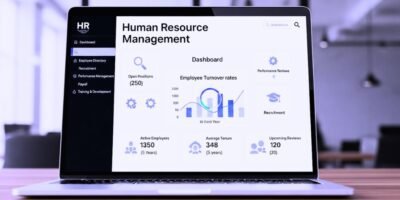Industrial Relations in HRM are a crucial component of human resource management (HRM) that focuses on managing the relationship between an organization’s employers, employees, and labor unions. It encompasses the policies, practices, and processes that govern the interactions and negotiations between management and employees, aiming to foster productive and harmonious workplace relationships. This article explores the concept of Industrial Relations in HRM, its significance, key elements, challenges, and impact on organizations and employees.
Understanding Industrial Relations in HRM
Industrial Relations in HRM refer to the dynamic and complex interactions between employers, employees, and their representatives, such as trade unions or labor associations. It encompasses the collective bargaining process, negotiation of employment terms and conditions, dispute resolution, and overall employee relations management within the workplace.
The field of Industrial Relations in HRM recognizes the importance of balancing the interests of employers, employees, and the wider society. It aims to create a framework that promotes fair treatment, open communication, and collaboration between labor and management, ultimately leading to a productive and cooperative work environment.
Key Elements of Industrial Relations in HRM
Several key elements contribute to the effective management of industrial relations within organizations. These elements include:
Collective Bargaining
Collective bargaining is the process by which representatives of employees (usually trade unions) negotiate with management to reach agreements on various aspects of employment, such as wages, working hours, benefits, and working conditions. It involves a give-and-take approach, with both parties striving to find mutually beneficial solutions.
Employee Participation
Employee participation involves decision-making processes affecting their work and the overall organization. It can take the form of joint consultation, employee representation on committees, or the establishment of employee suggestion programs. By involving employees in decision-making, organizations can improve job satisfaction, increase commitment, and foster a sense of ownership.
Grievance Handling
An effective grievance-handling system is essential for addressing and resolving conflicts and complaints in the workplace. It provides a structured process for employees to express their concerns and seeks fair resolutions through dialogue and mediation. By addressing grievances promptly and fairly, organizations can prevent the escalation of conflicts and maintain a positive work environment.
Employee Discipline
Employee discipline involves establishing a system of rules and procedures to address misconduct or non-compliance with organizational policies. It ensures that employees understand the expectations and consequences of their actions. Fair and consistent discipline procedures help maintain order and discipline within the organization.
Dispute Resolution
Dispute resolution mechanisms, such as mediation, arbitration, or conciliation, are utilized when conflicts arise between employees and management or among employees. These mechanisms provide alternative avenues for resolving disputes outside the traditional legal system. They aim to promote cooperation, preserve relationships, and minimize the negative impacts of conflicts on the workplace.
Significance of Industrial Relations in HRM
Industrial Relations in HRM play a significant role in organizations and have several important implications:
- Productivity and Efficiency: Effective industrial relations increase productivity and operational efficiency. When management and employees work collaboratively and have a shared understanding of goals and expectations, it creates a positive work environment that enhances motivation, job satisfaction, and employee commitment. It, in turn, leads to higher levels of productivity and performance.
- Employee Morale and Job Satisfaction: Positive Industrial Relations in HRM foster employee morale and job satisfaction. When employees feel heard, valued, and treated fairly, they are likelier to be engaged and satisfied in their roles. It can reduce turnover rates, enhance employee loyalty, and attract top talent.
- Conflict Prevention and Resolution: Strong Industrial Relations in HRM frameworks help prevent conflicts and provide mechanisms for their resolution. Organizations can address issues before they escalate into disputes by promoting open communication channels, constructive dialogue, and fair dispute-resolution procedures. This proactive approach minimizes disruptions and maintains a harmonious work environment.
- Compliance with Labor Laws and Regulations: Sound Industrial Relations in HRM practices ensure compliance with labor laws and regulations. Organizations that adhere to legal requirements and maintain positive relationships with employees and labor unions are less likely to face legal disputes, penalties, or reputational damage.
Challenges in Industrial Relations in HRM
Despite its benefits, managing Industrial Relations in HRM presents various challenges for organizations. Some common challenges include:
- Changing Workforce Dynamics: The modern workforce is becoming increasingly diverse and multi-generational. Organizations must navigate various employee groups’ different expectations, values, and work preferences, which can pose challenges in communication, engagement, and meeting their unique needs.
- Globalization and Outsourcing: Operating in a globalized economy often involves outsourcing, offshoring, or establishing international operations. These practices bring complexities in managing Industrial Relations in HRM across different jurisdictions, cultural contexts, and legal frameworks.
- Technological Advancements: Rapid technological advancements, such as automation, artificial intelligence, and the gig economy, are reshaping the nature of work. Organizations must adapt their Industrial Relations in HRM strategies to address the implications of these changes on employment relationships, job security, and employee rights.
- Conflicting Interests: Balancing the interests of management, employees, and labor unions can be challenging. Differing perspectives on wages, benefits, working conditions, and job security can lead to conflicts and hinder negotiation and bargaining.
- Legislative and Regulatory Changes: Labor laws and regulations are subject to change, often influenced by political, social, and economic factors. Organizations must stay updated with these changes and ensure compliance while managing the potential impact on their industrial relations practices.
The Impact of Industrial Relations in HRM
Effective management of industrial relations can profoundly impact organizations and employees. Here are some of the key outcomes:
- Harmonious Workplace Environment: Positive Industrial Relations in HRM contribute to a pleasant workplace environment characterized by mutual respect, cooperation, and trust. It fosters teamwork, collaboration, and overall employee well-being.
- Enhanced Employee Engagement: When employees feel their voices are heard, their rights are protected, and they have opportunities for participation and involvement, they are more likely to be engaged in their work. Engaged employees are more committed, innovative, and willing to go the extra mile to contribute to organizational success.
- Labor-Management Cooperation: Effective Industrial Relations in HRM promote cooperation and collaboration between management and labor. When both parties work together in a spirit of mutual understanding and shared goals, it creates a positive and constructive labor-management relationship.
- Reduced Turnover and Absenteeism: A well-managed Industrial Relations in HRM system can contribute to lower turnover rates and reduced absenteeism. Employees who feel valued and supported will likely remain with the organization, reducing recruitment and training costs. Additionally, a positive work environment can improve employee health and well-being, reducing absenteeism.
- Social and Economic Stability: Sound Industrial Relations in HRM practices contribute to social and economic stability at both organizational and societal levels. By fostering fair treatment, providing job security, and facilitating economic growth, industrial relations support social cohesion and contribute to the overall welfare of communities.
Conclusion
Industrial Relations in HRM are pivotal in managing the relationships between employers, employees, and labor unions. Organizations can foster productive and harmonious workplace environments by establishing effective policies, practices, and processes. Positive Industrial Relations in HRM increase productivity, employee satisfaction, and social stability. Despite the challenges, organizations prioritizing the management of Industrial Relations in HRM are better equipped to navigate complexities, resolve conflicts, and achieve long-term success while safeguarding the rights and well-being of their employees.













